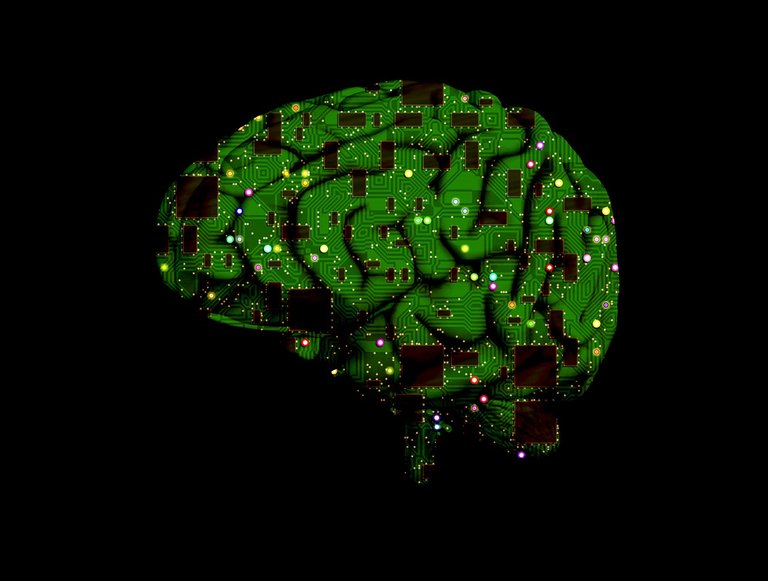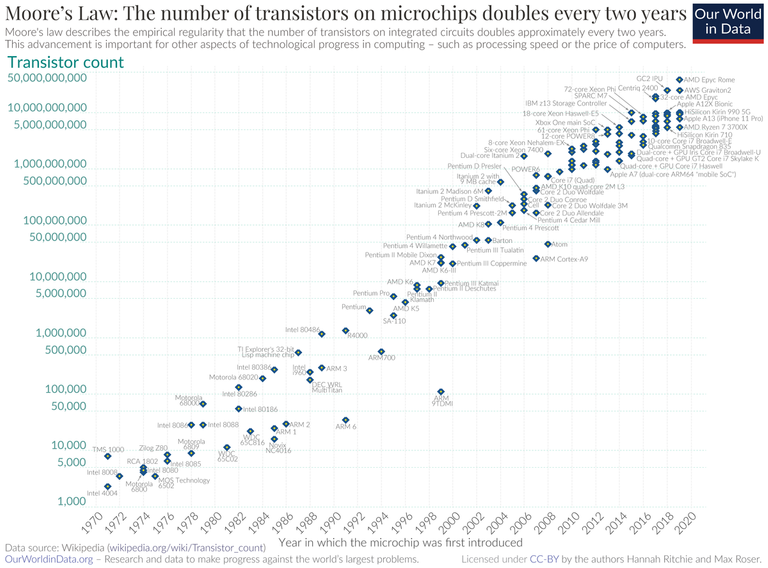Microchips: Silicon and Computing Power
Opening up a device after it has been damaged leaves me in awe every time I see the countless little components that are all working in unison with the software to make the device function. These devices are powered by microchips, which can take up to 26 weeks to manufacture and consist of up to one hundred layers of transistors crammed into a space no larger than a fingernail in some cases, they are used in everything from cell phones to computers.

You should be aware that these chips are the brains behind practically everything we use in our ever-expanding electronic world, and that they are extremely vital. As a result, they are in high demand. In this post, I'll share some of the things I've lately learned regarding the manufacturing process for microchips.
The Extraction Process:
The procedure begins with sand that is high in silicon! Silicon (Si) is a semiconductor that occupies a middle ground between the properties of a pure conductor and those of an insulator. When it comes to its physical qualities, such as conductivity, it can be adjusted by doping or adding impurities to meet the requirements of various electronic devices. The electrical signals that run through it can also be controlled by engineers, which is another advantage.
Fortunately for us, it is abundant in nature and is considered to be one of the top ten most common elements on the planet. However, it is typically found bonded to oxygen, which is separated from the sand using a procedure in which the collected sand is mixed with carbon and heated in crucibles to generate carbon monoxide and silicon that is 99 percent pure.
The major product is further processed to acquire ultrapure silicon. After that, a seed crystal is brought into touch with the molten silicon. When the seed crystal is gradually pulled away from the bottom surface, silicon atoms are deposited on the surface. This results in a huge cylindrical boule or a single crystal ingot of pure silicon, which is thinly cut into wafers. The diameters of silicon wafers are commonly between 1 and 12 inches (2.9 and 30.5 cm). Wafers as large as 18 inches in diameter can be produced in state-of-the-art facilities, with larger wafers able to yield a greater number of microchips.

The Production Process is as follows:
Cutting of the wafers takes place, and the manufacturing process is carried out in ultra sterile circumstances that are devoid of impurities like dust. When a single particle of dust comes into contact with a silicon wafer, the entire batch is put at danger of being ruined. An occurrence of this nature causes the process, which takes an average of 12 weeks, to be halted.
First and foremost, a deposition is performed. It is necessary to grow or deposit a thin non-conducting layer of silicon dioxide on the surface of the wafer before the silicon wafer can be prepared for lithography by coating it with photosensitive and light-resistant materials, which makes the subsequent stage critical.
After deposition, exposure is carried out next as it is necessary to expose the prepared silicon wafers to ultraviolet light, which passes through a reticule that contains the chip's blueprint. Areas that are exposed to light harden, and areas that are not exposed to light are etched away by hot gases, resulting in a 3D microchip being formed.
Various sections of the chip's electrical conductivity can also be adjusted by doping them with chemicals while subjected to high temperatures and pressure. The process is repeated hundreds of times for the same chip, resulting in a more complex integrated circuit with each iteration of the process.
To ensure conducting paths are created, a thin layer of metal (e.g., aluminium) is overlaid onto the chip along with an etching process to remove everything except the thin conducting pathways. It is therefore possible to put down several layers of conductors, which are separated by glass insulators, on top of one another. Each chip on the wafer is further subjected to performance testing before being separated from the other chips on the wafer using a saw.
Microchips are essentially circuits built on an incredibly small scale, with a basic set of components such as capacitors, which can temporarily store electrical charge, as their building blocks. When it comes to electrical current regulation, resistors are used, and transistors are used to either amplify or switch the electrical signals that are passed through a computer chip. Advanced chips, which are typically found in high-end graphics cards, can have upwards of 28 billion transistors on board.
When a chip has more transistors, it can send out more instructions, which increases the computational power by a proportional amount. Based on the sheer power of microchip technology, Moore's Law predicted that computer chip manufacturing would advance at a steady rate, with transistor counts doubling every two years as a result of the steady advancement of the technology we use every day. Even as you read this, the prediction from a decade ago is still coming to fruition.

Manufacturers have reduced the size of their transistors in order to fit more transistors onto chips. As transistor size continues to shrink, we will be able to produce even more powerful chips for our phones, game consoles, and computers as a result of each advancement. Transistors with diameters as small as 8x10-6 inches (2nm) have been developed in recent years, allowing a mind-boggling 50 billion transistors to be squeezed onto a single chip.
Manufacturing microchips is one of the most difficult tasks a person can undertake, but this does not prevent technological breakthroughs from occurring on a daily basis in the tech industry! Below is a glimpse into how the microchips are made:
Such technological power, on the other hand, is in the hands of a relatively small number of people. Would you mind sharing your thoughts on microchips with me? Do you believe we might be able to come up with alternatives? Will our usage of silicon be able to be sustained over time? I guess we will have to wait and find out.
Thanks for reading!
Some References:
Silicon Chips: What are Computer Chips Made Of?
Moore's law
Semiconductors: The humble mineral that transformed the world
What is silicon, and why are computer chips made from it?
Silicon
Many times, we just hold these gadgets without knowing or even thinking about the processes that led to their emergence. This is quite a read.
All of the many devices we own, went through major innovations and technologies to arrive packaged in boxes for our use :)
Thanks for reading through!
Chips are everywhere, and you mentioned the limited number of companies building them. To this disadvantage, we should add the problems due to the pandemic and the China-US commercial war that leads to the current shortage.
Personally, I am wondering when and if Moore's law will break down... The answer is probably connected to the limits of innovation.
Absolutely! The pandemic and chips shortage has continued to impact us in every way! And i agree that the limits of innovation will tell when Moore's law will breakdown.
Interestingly enough, I attended a nanoscience seminar today and the speaker discussed Moore's law. What a coincidence ;)
Thanks for your contribution to the STEMsocial community. Feel free to join us on discord to get to know the rest of us!
Please consider delegating to the @stemsocial account (85% of the curation rewards are returned).
You may also include @stemsocial as a beneficiary of the rewards of this post to get a stronger support.